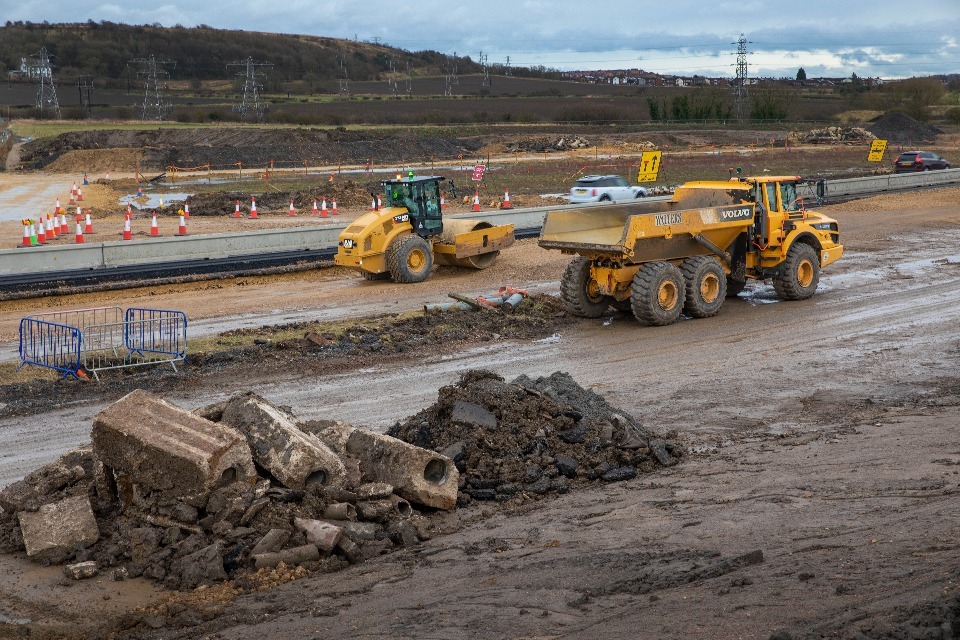Op-Ed: The UK needs a holistic, integrated approach to digital transformation

- by Admin
- September 16, 2024
- The UK needs a major shift towards a holistic and integrated approach to digital transformation, expert says
- Introducing a “systems of systems” strategy in the UK’s infrastructure sector is critical
- The UK’s Conservative government eliminated the department responsible for creating a digital infra strategy
In the 19th century, Great Britain led the world in deploying new technologies like steam power that enabled mass production, providing the foundation of the Industrial Revolution.
Today, a digital industrial revolution is taking place, as governments and companies around the world deploy technologies like automation, artificial intelligence (AI), robotics and cloud to transform the way industries operate – reaping vast improvements in efficiency and profitability.
Far from being at the forefront of this new revolution, the UK is a Tail End Charlie – lagging years behind nations like Brazil, China, Saudi Arabia and Sweden. Worse, the UK is notorious for a series of epic and embarrassing digital infrastructure fails, including its abandoned Smart Motorways (a.k.a. “digital murderways”) and forgetting to include Wi-Fi service on London’s new $25 billion Elizabeth Line.
Like most of the UK’s problems, this failure to innovate is partly the fault of the government. Like the U.S., which is also making a proper bollocks of Industry 4.0, the UK doesn’t currently have a government-initiated, taxpayer-supported strategy for digital industrialization. (It had one, briefly, back in 2010, but the Conservatives unpicked that strategy and eliminated the Department for Business, Energy & Industrial Strategy that was responsible for it).
What can be done to stop the UK from tripping over its giant floppy (digital) clown shoes and make it a competitive force in global digital industries? To find out, I talked to mega-boffin Mark Enzer OBE FREng, a strategic advisor on this sort of thing to both the Institute of Civil Engineers (ICE), and Mott MacDonald, a management, engineering and development consultancy.
Here’s what he said:
Integrating physical and cyber infrastructure
Enzer: The UK certainly faces a challenge. I think the key issue is that we haven’t really figured out yet how to bridge the gap between the physical and digital worlds in a truly integrated way. We see individual examples of digital transformation, like the use of robots at Felixstowe Port, but they often exist in silos and lack a coherent, overarching strategy.
Playing catch-up with China on innovation
Enzer: A big part of the reason for [the UK playing catch-up] is the way the Chinese government operates. They’re able to make decisions and implement them quickly, while the UK, with its democratic system, tends to be more deliberative and cautious. The UK’s way of doing things can sometimes slow us down, so we need to find a way to embrace innovation and move faster, without compromising our values.
Overseeing digital integration strategy
Enzer: That’s a complex question, and there’s no easy answer. I believe that the strategy needs to be integrative, which means we have to transcend the existing silos. Instead of dealing with isolated technologies like AI, automation and robotics on their own, we need to integrate them for specific purposes or applications. I think the owner/operators of the infrastructure need to take the lead. They’re the ones who understand the existing systems and how new technologies can be integrated into them. However, they can’t do it alone. They need positive support from the supply chain.
Collaborating with the entire supply chain
Enzer: The strategy needs to include the entire supply chain, from advisors and contractors to the companies supplying raw materials. It needs to be an “enterprise digital transformation strategy,” as it’s called in Project 13. Project 13 is an approach led by some of the UK’s most forward-looking infrastructure clients. It’s all about shifting away from transactional relationships in delivery to a more collaborative “enterprise” approach, where everyone is working together towards shared outcomes.
Proceeding with caution
Enzer: We need to be cautious about creating one giant plan. That could be a recipe for bureaucracy and inefficiencies. But the idea of an enterprise with a clear vision and everyone incentivized towards achieving the outcomes is a good model. Ideally, it should be the government. They’re in the best position to take a holistic view and set the direction for the entire nation. However, the UK government’s history with industrial strategy has been somewhat spotty. … There has been a hesitancy to commit to a real industrial strategy. … That’s why I believe the industry needs to take the lead. We should gather and develop a vision that can guide the UK towards a more integrated and technologically advanced future. Eventually, the government will catch up.
Catapulting into the future
Enzer: There’s a whole bunch of catapults that have been set up by the government to try and bridge the gap between research and industry. Effectively, it’s the British version of the Fraunhofer-Gesellschaft [institutes and research hubs], and there are a number of catapults. They each go about their work in a slightly different way but are at least connected by the name catapult. There’s one called Connected Places Catapult. The Digital Catapult is another one which is leading on cyber-physical infrastructure. And then there’s the High Value Manufacturing Catapult. I think that’s quite interesting, too, because it’s in a similar space, and definitely leading in the area of robotics, etc.
The Connected Places Catapult is focused on cities and transport, and they are now the host to something called the Digital Twin Hub, which was started by the Center for Digital Built Britain and is effectively a kind of a meeting point for a community based around digital twins.
Taking next steps
Enzer: There’s a network of us, systems of systems thinkers, who are coming together and sharing our expertise. We’re working on creating a shared understanding of systems thinking in the built environment and developing a set of recommendations. We’re calling it the Systems Connective.
The Latest News
-
December 21, 2024Inside Britain’s saddest shopping centre: Town centre mall empty just DAYS before Christmas as depressed locals say ‘it’s a disgrace’
-
December 21, 2024High street giants plot new warning to Treasury over retail jobs
-
December 21, 2024Travel news live: Traffic chaos to hit Christmas getaway as weather warnings issued
-
December 21, 2024Daily horoscope: December 21, 2024 astrological predictions for your star sign
-
December 20, 2024Telemark Sprint World Cup: Jasmin Taylor wins gold for Great Britain





